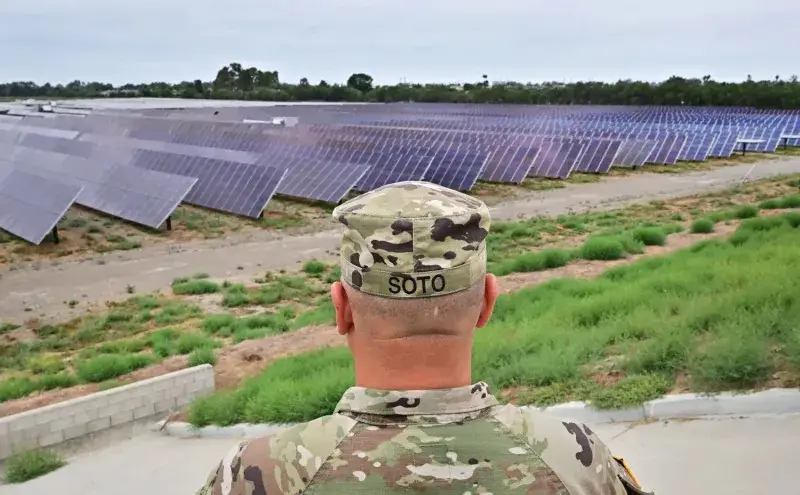
Introduction
The Department of Defense’s 2014 Climate Change Adaptation Roadmap and the subsequent updated Department of Defense Climate Adaptation Plan on September 1, 2021, established climate change as a national security priority. The recent Executive Order (EO) 14057 has added emphasis on DOD’s efforts as the nation’s leading federal agency energy consumer to decrease Greenhouse Gas (GHG) emissions. Black & Veatch developed this eBook, Navigating the Pathway to Net Zero for Military Installations, to help installation energy managers, government, and industry plan for a way ahead to achieve intended Net Zero GHG emissions reductions. Decarbonization, first embraced by the private sector, is a new criterion and is not well understood in the Federal Architecture/ Engineering/Construction (AEC) space.
The Unified Facilities Criteria (UFC) has not yet addressed many of the necessary technologies. The terms “Net Zero” and “Electrification”, regarding GHG Emissions Reduction mandated in EO 14057, need to be defined and specific activities need to be incentivized for technical requirements to achieve intended Net Zero GHG emissions reductions. The AEC Industry needs to prepare to deliver Net Zero projects with novel approaches and technologies. New topics such as Carbon Embodiment, Energy Use Intensity, Passive Design, Social Cost of Carbon, and Deep Energy Retrofits will become important concepts for AECs to master to “Go Beyond” traditional goals and criteria. Decarbonization will require Federal agencies and Federal contractors to work in new ways to deliver meeting new policies and support them in reaching Net Zero Energy at installations around the world. Now more than ever, mission resilience is a Net Zero driver — for example, this is reinforced in the U.S. Department of the Air Force Climate Campaign Plan. The Air Force’s priorities are to maintain air and space dominance in the face of climate risks, ensure decisions reflect an understanding of the impacts of climate on their mission, and build resilience by optimizing energy use and pursuing alternative energy sources.
Net Zero Emissions (NZE) facilities require a wide variety of technologies, solutions, and lower carbon fuel sources to achieve operational targets. These solutions will be influenced by geographic regions and local economic conditions; therefore, a range of large and small businesses will be instrumental in delivering NZE projects. The government will benefit most from leveraging local expertise and experience, as well as large-scale project experience and design solutions.
Energy independence and electric mobility also support military missions. Distributed energy resources (DER), such as microgrids and solar photovoltaic (PV) arrays, create installation resilience and energy reliability, which improves mission assurance and the operation of mission-critical facilities. Additionally, upfront costs and lifecycle cost implications will have a significant impact on project outcomes in the short term, particularly while the NZE mandate remains unfunded.
At the same time, the Federal Sustainability Plan asks federal agencies, including the DOD, to procure power from carbon pollution-free sources and build climate-resilient infrastructure and operations. Combined, these actions will contribute to national energy security and combat climate change.
What Is Net Zero?
“Put simply, net zero means cutting carbon emissions to a small amount of residual emissions that can be absorbed and durably stored by nature and other carbon dioxide removal measures, leaving zero in the atmosphere” as defined by the United Nations.
As called for in the Paris Agreement — emissions need to be reduced by 45% by 2030 and reach net zero by 2050. We can achieve this by replacing polluting coal, gas, and oil-fired power with energy from renewable sources (such as wind or solar), geothermal energy, and nuclear energy which would dramatically reduce carbon emissions. Getting to net zero requires all governments to reduce their Nationally Determined Contributions (NDCs) and take bold, immediate steps towards reducing emissions now.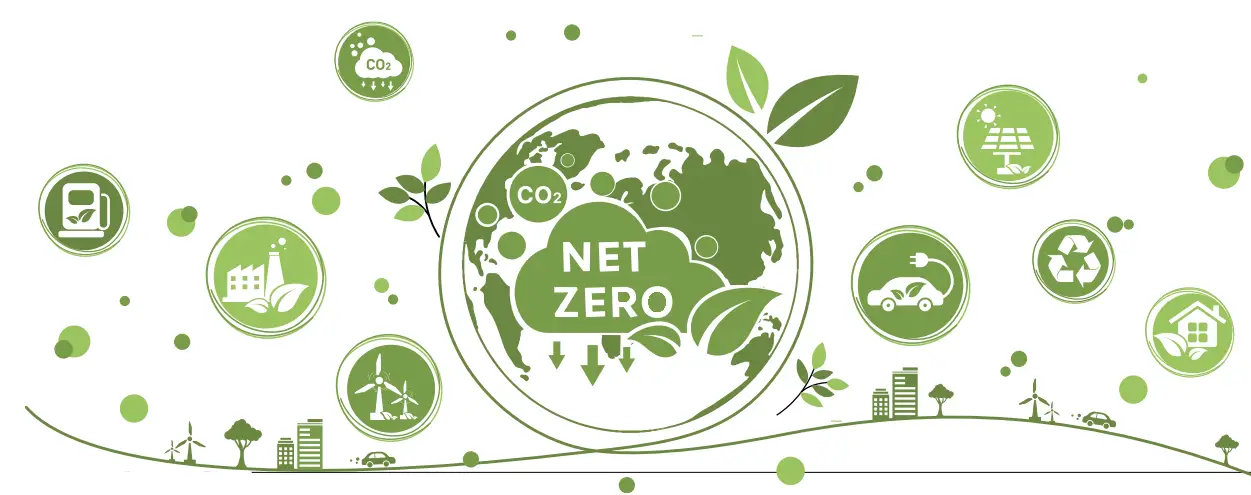
DOD Net Zero Strategy Priorities
Mission-critical facilities, programs, and infrastructure must be designed and built to fulfill its purpose on day one. It also must remain fully operational for years and decades to come through the full range of today’s and tomorrow’s threats. The following Installation Resilience policies require government contractors and federal agencies to comply and move this strategy forward.
Installation Resilience Policy
Installation resilience policy requirements are aligned to ensure initiatives are in lockstep with Administrative and Federal priorities while bolstering operational capability, projecting combat power, and accelerating innovation at military installations worldwide. The following DOD Policy requirements have implemented programs and plans under their frameworks:
- DOD Climate Adaptation Plan is tied with National Defense
- Strategy & Great Power Competition Priorities.
- DOD Electrification of Standard Building Operations — Requirements are Mission-Centric.
- DOD and AFCEC Utility Privatization Programs — Reinvigorated programs.
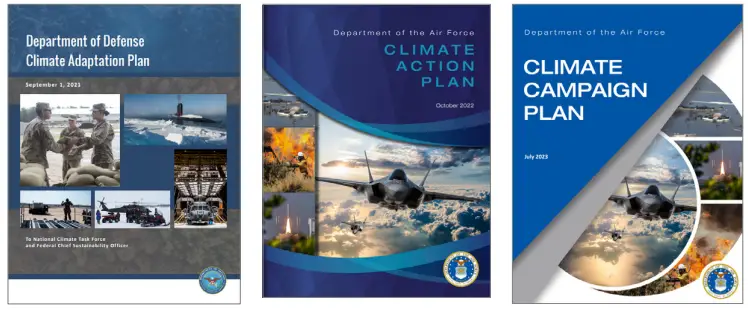
Each Military Department has published a plan or strategy to operationalize climate adaptation and mitigation, with actions to enhance the readiness, resilience, and capabilities of the force:
- Department of the Air Force Climate Action Plan: U.S. Air Force’s Energy Program: Prepare and recover from energy disruptions to ensure continuous mission capability, focusing on resilience, demand optimization, and supply assurance. Goals: 99.9% energy resilience for critical missions by 2030; 50% carbon pollution-free electricity by 2030; 7 days of islanding capability for critical missions.
- United States Army Climate Strategy: U.S. Army’s Resilience Goals: Anticipate and adapt to changing conditions for mission-critical facilities readiness. Install microgrids at each of its more than 130 installations by 2035.
- Department of the Navy Climate Action 2030: U.S. Navy’s Energy Security Goals: Adapt and overcome energy disruptions to ensure mission readiness, focusing on reliability, resilience, and efficiency. Prioritize on-site Carbon Pollution-Free Electricity (CFE) generation, Maximize CFE procurement, and Modernize installation energy infrastructure.
Resilience-Focused Plan
For example, the Department of the Air Force (DAF) has developed a strategy and a future implementation plan that will help them address the Five Attributes of Resilience (“5Rs”):
- Robustness: Incorporates the concept of reliability and refers to the ability to withstand disturbances.
- Redundancy: Involves having excess capacity and backup systems, which enable the maintenance of core functionality in the event of disturbances.
- Resourcefulness: Ability to adapt to crises, respond flexibly, and transform negative impact into positive.
- Response: Ability to mobilize quickly in the face of crises.
- Recovery: The ability to regain a degree of normality after an event, including the ability of a system to be flexible and to evolve to deal with new circumstances.
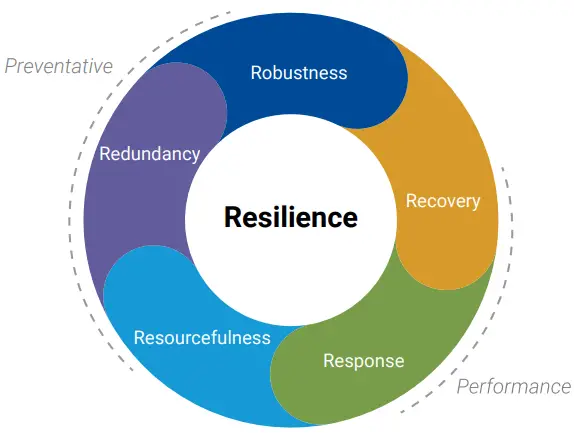
- Source: DAF, Renee Ayala and Nancy Balkus, SAME JETC Presentation: Navigating the Pathway to Net Zero for Air Force Installations, 14 May 2024, Orlando, Florida.
DAF Net Zero Framework
Within DOD, the Department of the Air Force (DAF) is developing policies to reduce the impact of climate change on their mission as well as their operations’ impact on the environment with the Air Force Climate Action Plan. The forthcoming Air Force Policy and Net Zero Framework will have an impact on Installation and Energy project delivery as use their purchasing power towards zero emissions and carbon pollution-free electricity. The following areas of strategies and pilots will be implemented:
Strategies & Pilots
- Carbon Pollution-Free Electricity: Grid-Supplied CFE, CFE Purchases, and Onsite CFE Generation-Utility Data Automation.
- Electrification: Base Electrification, Fleet Electrification, Flightline Electrification, Shadow Meeting-Utility Data Automation, and Net Zero Buildings Pilots.
- Energy Efficiency: Pilots-Deep Energy Retrofits, and Net Zero Buildings Pilots.
- High Performance & Sustainable Buildings Design.
- Building Demolition & Consolidation: Growth Offset Policy.
DAF Pilots
- DAF Resilience and Renewable Energy Initiatives.
- DAF Distribution of Privatized Utility Contracts.
- Fleet Electrification Pilot Program.
SAF/IEE Resilience Integration Team
Resilience integration across Built & Natural Infrastructure, Installation Energy, & Cyber
In January 2023, the Office of the Deputy Assistant Secretary of the Air Force for Environment, Safety, and Infrastructure (SAF/IEE) stood up a new directorate, “Resilience Integration.”
Mission
Integrating installation resilience and sustainability activities through stakeholder coordination across SAF/IEE and its Congressional, Federal, State, Local, DOD, and DAF partners for more efficient, effective, and strategic outcomes.
DAF Approach to Achieving Net-Zero Emissions Buildings (EO 14057)
Goal
Net Zero Emissions Buildings.
Catalyzing Clean Energy Industries and Jobs Through Federal Sustainability – Government-wide goal is to achieve:
- Net-zero emissions buildings by 2045.
- 50% emission reduction in greenhouse gases (Scope 1 and 2 GHGs) by 2032.
- Prioritize energy efficiency and elimination of onsite fossil fuel use.
Address Scope 1, 2, 3 GHG
- Scope 1: Electrification of Buildings.
- Scope 2: Carbon Pollution-Free Electricity.
- Scope 3: Embodied Emissions.
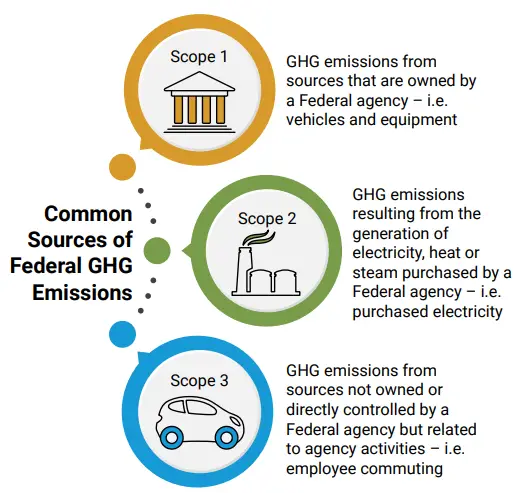
Net Zero Emissions Requirements

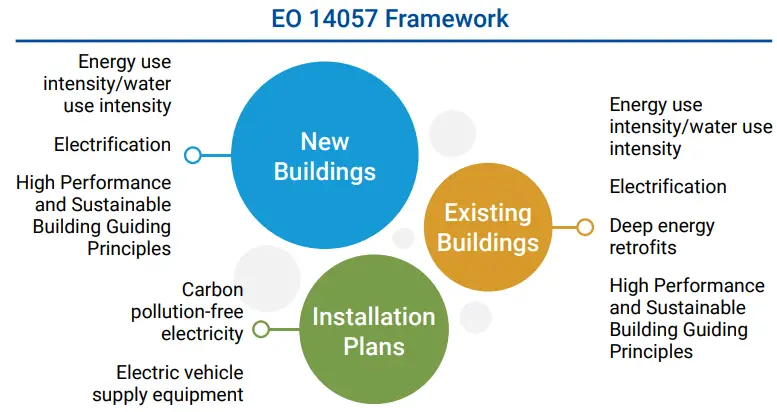
Source: DAF, Renee Ayala and Nancy Balkus, SAME JETC Presentation: Navigating the Pathway to Net Zero for Air Force Installations, 14 May 2024, Orlando, Florida.
New Building Requirement
Net-Zero Emissions Buildings, Campuses, and Installations – New construction and modernization
- All buildings greater than 25,000 gsf, are designed to be net-zero emissions by FY30.
- Reduce Energy Use Intensity (EUI) and Water Use Intensity (WUI)
- All-electric systems
- Carbon pollution-free electricity using on-site renewable energy or clean energy
- Other cross-cutting strategies and requirements.
- For projects greater than 25,000 gsf, apply HPSB GPs found in Unified Facilities Criteria (UFC) 1-200-02, High Performance and Sustainable Building Requirements.
- Use of low embodied emissions materials
- Electric vehicle supply equipment
Existing Buildings/Installation Plan Requirements
Net-Zero Emissions Buildings, Campuses, and Installations – Existing buildings
- Reduce building portfolio emissions; 30% applicable bldgs (gsf) zero scope 1 by 2030.
- Increase energy efficiency – EUI targets
- Increase water efficiency – WUI targets
- Electrification of buildings (Federal Building Performance Standard); 30% of covered facilities by 2030
- Deep Energy retrofits – 30% of covered facilities by 2030; targeting 40% reduction of 2019 baseline
- Leverage performance contracting
- Other cross-cutting strategies and requirements.
- Apply HPSB GPs – UFC 1-200-02
- Electric vehicle supply equipment
Alignment to Net Zero Emissions Goals (DOD/DAF/SAF)
Electrification of space conditioning, water heating, cooking, and laundry systems/equipment
- DOD Memo mandates electrification.
- DAF Client Action Plan commits to EO goals.
- SAF Memo aligns with EO and DOD Memo.
As a trusted advisor for DOD, Black & Veatch will support its clients through this change. We know firsthand how to apply world-class capabilities to ensure the highest level of resilience focus on facilities, programs, and infrastructure with mission-critical national interest. We are actively engaged in helping Federal government agencies develop clear fact-based insights and strategies to address the most pressing questions.
- How do we create an executable decarbonization roadmap?
- How do we integrate decarbonization plans with our other plans for sustainability?
- What is our engagement, and adoption strategy?
- What are our metrics for success (and are they the right ones)?
- How have we identified (and mitigated) investment risks?
DOD Policy Changes and Funding

In response to increased decarbonization concerns and threats across the world, Net Zero and carbon reduction policies have been updated and the DOD has introduced the EO 14057 requirement for federal contractors to comply and support them to meet these changes. The continuing aging of infrastructure and climate challenges concerns make it more challenging but necessary to ensure a clean energy future that addresses consumer expectations and behavior. The U.S. Federal Government continues to transform itself including decarbonization, electrification, and digitization resulting in new federal funding opportunities. Additionally, Governments, businesses, and utilities have set ambitious sustainability objectives. As a result, in the past couple of years, Washington has delivered on the biggest federal investment in infrastructure in decades, including more than $62 billion for electric and grid networks and more than $47 billion for resilience – as part of the $1.2-trillion Infrastructure Investment and Jobs Act (IIJA). Government agencies, federal contractors, and stakeholders must move fast enough to meet these demands to ensure a secure and resilient future.
Funding from the IIJA, also known as the Bipartisan Infrastructure Law, certainly helped impact at least some of this investment decision-making by thee $107 billion it will provide in funding and incentives for clean energy, power, and electricity grid reliability projects. The more recently enacted Inflation Reduction Act (IRA) — approved by Congress and signed into law in August last year — provides another $369 billion in funding incentives for clean energy, arguably making it the most impactful piece of energy policy ever enacted in the United States.
The goal: reduce carbon emissions by 40 percent by 2030, though current investment in electric infrastructure to get there still does not match the need.
The New Buildings Institute (NBI) reports the growth of net zero energy projects for emerging buildings and districts each year has grown continuously and has more than doubled in count since 2020.
Number of Net Zero Energy Projects

Secure Resilient and Sustainable Infrastructure
From rapidly increasing load demand attributed to fleet electrification and the buildout of electric vehicle (EV) infrastructure to the stresses of climate change and issues involving intermittencies of renewable energy, the robustness of the nation’s infrastructure and energy system is under scrutiny. Incentivizing the energy transition for the military will either require new infrastructure or upgrades, mods, or renovations to existing infrastructure to meet the global impacts of governments accelerating demand for cleantech (e.g., IIJA and other federal funding) to meet Decarbonization & Zero-Emission Sustainability Goals and Electrified Transportation/Fleets & Climate Change Policies. Some other factors driving the energy transition for a more secure, resilient and sustainable infrastructure forward include:
Decarbonization & Zero-Emission Sustainability Goals
- As the global push for decarbonization intensifies, the U.S. clean energy business — power from the sun and the wind, both on land and offshore — is booming, forcing utilities to sort out the strategy and investment needed to accommodate those green sources of power.
- Due to EO 14057, the DOD’s Net Zero Federal program aims to achieve NZE across federal operations by implementing strategies that reduce carbon emissions and enhance sustainability.

Electrified Transportation/Fleets
- Transportation is the single largest source of GHG emissions in the U.S. — and transitioning to electric fleets is a vital part of DOD’s strategy.
- Black & Veatch developeod an eBook, 10 Steps to Build Sustainable Electric Fleets for Military, to help fleet and sustainability managers select charging technology and
sites, plan for power delivery, and construct optimal EV charging facilities. - Grid resilience to climate impacts and a series of interconnected elements round out a range of choices reflecting the competing priorities within the broader grid modernization effort.
Climate Change
- To strengthen the resilience of the U.S. grid, it is imperative to dramatically modernize it to bring about climate-resilient infrastructure while accommodating ever-growing charging needs of electric vehicles, a Capitol Hill priority.
- Droughts, floods, wildfires, hurricanes, and other extreme weather events attributed to climate change continue to test the industry’s infrastructure and assets, stoking questions about its resilience.
- In 2022, Reuters reported that power outages have more than doubled in the past six years compared to the previous six, according to the media outlet’s examination of federal data.
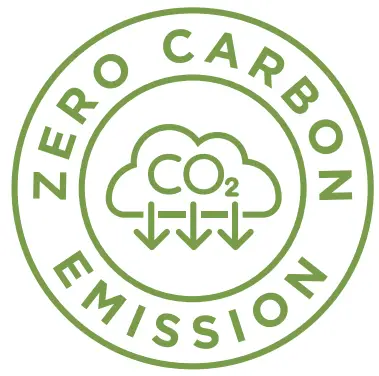
Black & Veatch is a market leader in deploying innovative solutions for decarbonization and NZE. They help identify the impacts of operations on the global carbon cycle, climate risks and opportunities, and develop strategies and roadmaps to remove carbon from operations and reduce or avoid GHG emissions. Black & Veatch’s clients have aggressive Net Zero goals for very large energy-consuming facilities. Our team of experts and partners are committed to supporting the DOD in meeting their decarbonization and NZE goals.
Path Forward
Like with any Federal contract, Federal contractors are required to engage with critical stakeholders throughout the duration of the project — such as multiple government agencies sometimes varying across different branches, power utilities, water utilities, technology vendors, rural communities, and higher education entities. This impacts decision making and requires addressing Net Zero concerns particularly when engaging with utilities that provide energy and water sources critical to the government’s mission.
Creating a Successful Decarbonization Strategy
The Need for a Roadmap
True commitment to sustainability requires a roadmap to get there. First identify where the organization or agency is and where it wants to be – identify the gap, allow for scenarios and develop “crawl, walk or run” strategies planned according to their own goals and needs.
Ten Steps for Creating a Successful Roadmap
While crafting a decarbonization roadmap can be intimidating, breaking it into steps can make it less daunting and more achievable: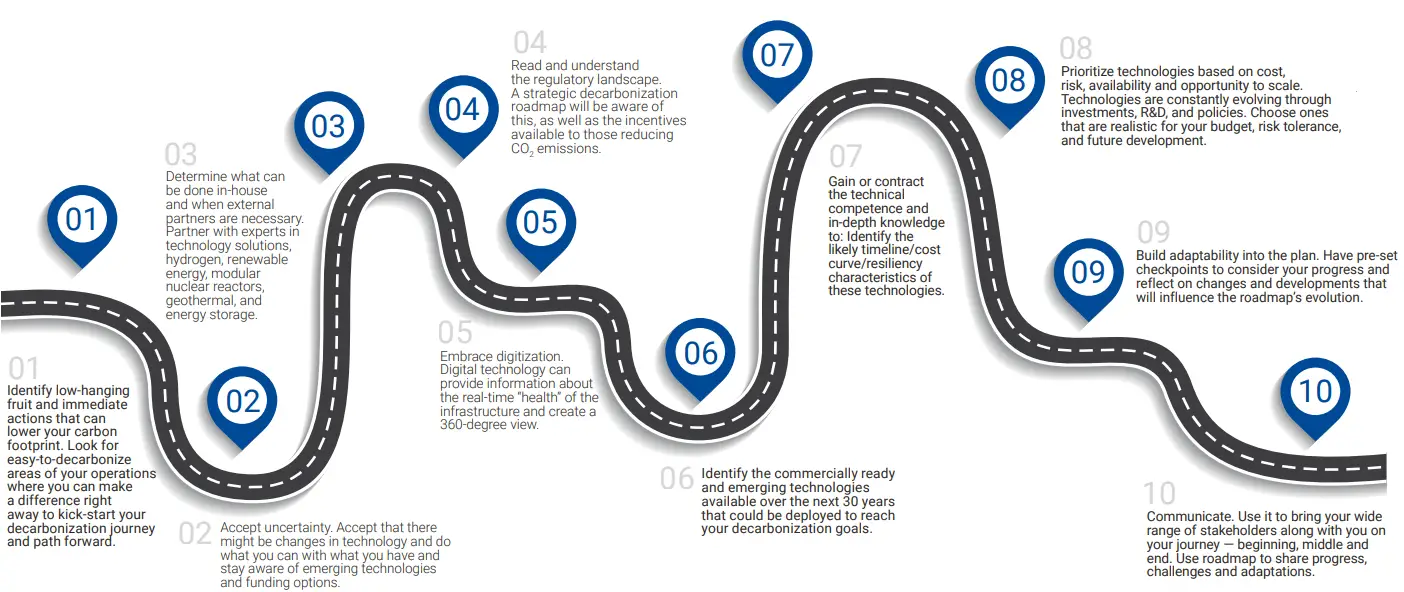
Conclusion
Our nation has a great opportunity to leverage Net Zero partners to deliver climate adaptation and defense resilience. Government procurements have the potential to realize leveraging innovative and proven commercial industry expertise, but only to the extent the procurement shapes and incentivizes new practices, criteria, and technologies in delivering projects to meet the new mandates. At Black & Veatch, our mission is to provide competitive advantages for clients seeking to protect our nation, eliminate threats, and strengthen its systems so they work no matter what.
Read Our Other eBooks and Reports to Stay Resilient and Secure From Threats
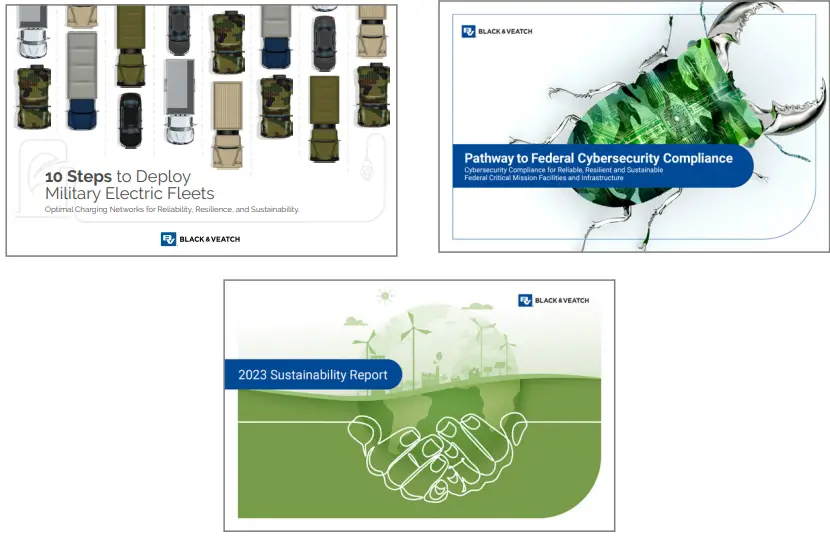
Ensure sustainability at your facility, systems, infrastructure, or program to reduce carbon emissions and strengthen systems so they are reliable and resilient.
Learn more about Black & Veatch’s NZE and decarbonization expertise and connect with us about your reliability and resilience goals.
MORE INFO
© Black & Veatch Holding Company, 2024. All Rights Reserved. The Black & Veatch name and logo are registered trademarks of Black & Veatch Holding Company. This document is a marketing document intended to generally describe the experience of and services provided by Black & Veatch. It should not be considered a guarantee or warranty of performance of any type. Any final contract between Black & Veatch and a Client will contain appropriate negotiated guarantees and warranties. Rev. 08/24
Documents / Resources
 |
BLACK AND VEATCH Navigating the Pathway to Net Zero for Military [pdf] User Guide Navigating the Pathway to Net Zero for Military, the Pathway to Net Zero for Military, Pathway to Net Zero for Military, to Net Zero for Military, Net Zero for Military, Zero for Military, for Military, Military |
